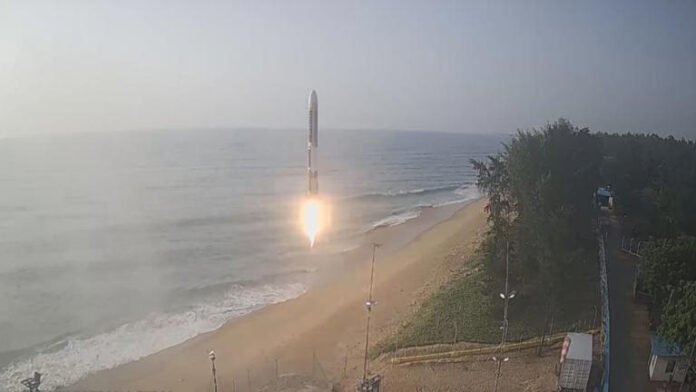Indian space startup Agnikul Cosmos has successfully flown the world’s first 3D-printed rocket engine. The milestone, achieved after four previous attempts, marks a significant leap forward in the development of space propulsion technology and underscores the growing prominence of startups in the global space sector.
Founded in 2017 by Srinath Ravichandran and Moin SPM, Agnikul Cosmos aims to revolutionize the satellite launch industry by providing affordable and efficient access to space. The company’s innovative approach, which incorporates 3D printing technology and modular rocket designs, has garnered attention from investors and space agencies around the world.
The successful flight of Agnikul’s 3D-printed rocket engine comes after years of research, development, and testing. The engine, known as Agnilet, is a crucial component of Agnikul’s Agnibaan launch vehicle, which is designed to deliver small satellites into low Earth orbit. By utilizing 3D printing technology, Agnikul has been able to significantly reduce the cost and time required to manufacture rocket engines while maintaining high levels of performance and reliability.
The significance of this achievement extends beyond its technological implications. It represents a triumph of perseverance and determination in the face of numerous challenges. Agnikul faced setbacks and failures in its quest to develop the world’s first 3D-printed rocket engine, but each attempt brought valuable insights and lessons that ultimately led to success.
Srinath Ravichandran, CEO of Agnikul Cosmos, expressed his excitement and gratitude following the successful flight test. “This is a momentous occasion for our team and for the Indian space industry as a whole,” he said. “We have overcome numerous obstacles to reach this point, and we are thrilled to demonstrate the capabilities of our 3D-printed rocket engine.”
The development of 3D-printed rocket engines has the potential to revolutionize the aerospace industry in several ways. Traditional rocket engine manufacturing methods are time-consuming, costly, and often involve complex machining processes. By contrast, 3D printing allows for the rapid prototyping and production of engine components with minimal waste and maximum efficiency.
Moreover, 3D printing technology enables engineers to design and optimize rocket engines in ways that were previously impossible. Complex geometries, internal channels, and intricate cooling systems can all be incorporated into 3D-printed engine designs, leading to improved performance and reliability.
The successful flight test of Agnikul’s 3D-printed rocket engine represents a significant milestone in the company’s journey towards commercial spaceflight. Agnikul aims to conduct its first commercial launch by 2022, delivering payloads of up to 100 kilograms to low Earth orbit. The company has already secured contracts with several satellite companies and government agencies, positioning itself as a key player in the global small satellite launch market.
The broader implications of Agnikul’s achievement are not lost on industry experts and observers. The success of a small startup like Agnikul in developing advanced rocket technology highlights the democratizing effect of 3D printing and other emerging technologies on the aerospace sector. It also underscores the increasing competition and innovation within the space industry, as startups and established companies alike race to develop the next generation of space launch vehicles and technologies.
In addition to its commercial applications, Agnikul’s 3D-printed rocket engine has the potential to benefit space exploration efforts and scientific research. Small, affordable launch vehicles like Agnibaan could enable universities, research institutions, and emerging spacefaring nations to access space more easily and conduct experiments and missions that were previously out of reach.
As Agnikul Cosmos celebrates its historic achievement, the company looks ahead to the next phase of its journey. With plans to scale up production and expand its launch capabilities, Agnikul is poised to play a significant role in shaping the future of space exploration and satellite deployment. The successful flight of the world’s first 3D-printed rocket engine is not just a milestone for Agnikul Cosmos—it’s a giant leap forward for the entire aerospace industry.

